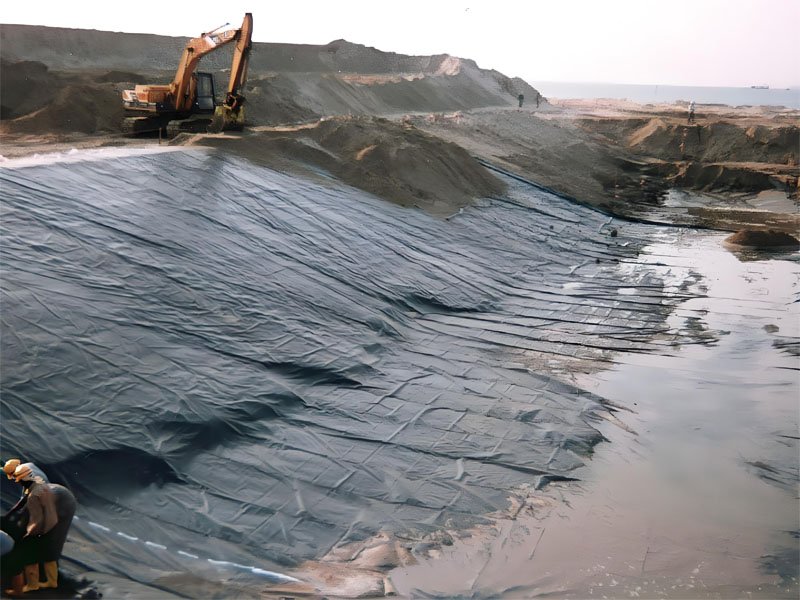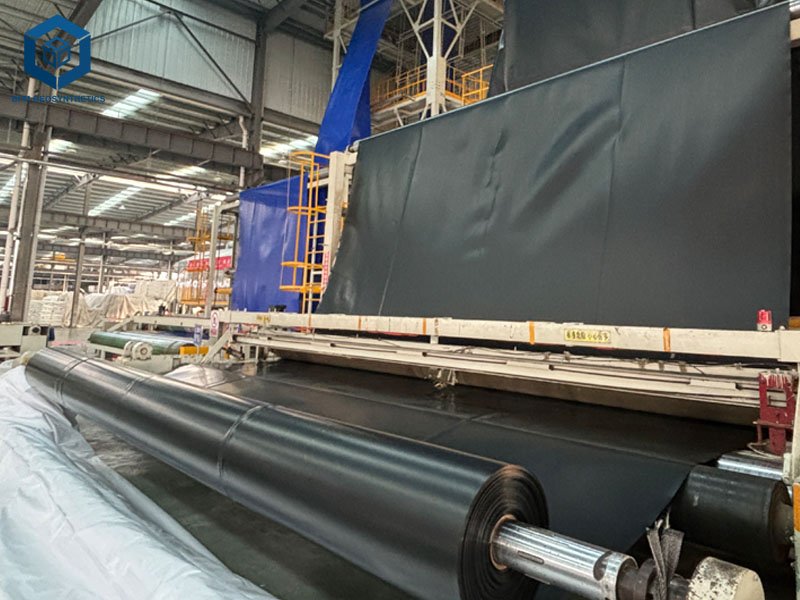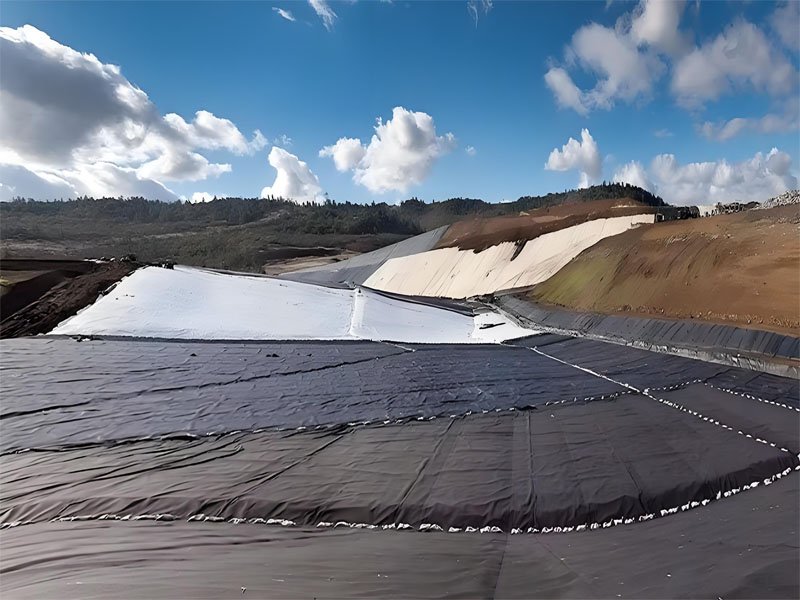When it comes to ensuring the longevity and stability of dams, selecting the right liner is crucial. BPM Geosynthetics, a leading name in the industry, offers a comprehensive range of dam liner solutions designed to meet diverse project requirements. Understanding the intricacies of dam liner pricing involves considering various factors such as material type, installation complexity, and environmental conditions. In this guide, we will delve into the key aspects that influence dam liner price and how BPM Geosynthetics can provide cost-effective and reliable solutions for your dam projects.
1. What is Dam Liner?
Dam liner, also known as a geomembrane liner, is a waterproof barrier used to line reservoirs, ponds, dams, canals, and other water containment structures. Its primary purpose is to prevent water seepage and leakage, thereby maintaining water levels and preventing the loss of water into the surrounding soil.
Dam liners are typically made of synthetic materials such as PVC (Polyvinyl Chloride), HDPE (High-Density Polyethylene), LLDPE (Linear Low-Density Polyethylene), EPDM (Ethylene Propylene Diene Monomer), or other geomembrane materials. These materials are chosen for their impermeability and durability.
Key functions and benefits of dam liners include:
- Waterproofing: Dam liners prevent water from seeping into the soil, maintaining water levels in reservoirs and dams.
- Erosion Control: By preventing water seepage, dam liners help control erosion, ensuring the stability of the structure.
- Water Conservation: They help conserve water by reducing losses due to seepage and evaporation.
- Environmental Protection: Dam liners can prevent contamination of soil and groundwater by hazardous materials in the water.
- Longevity: High-quality dam liners can provide long-term protection, reducing maintenance and repair costs over time.
Dam liners are available in various thicknesses, sizes, and materials to suit different project requirements. Proper installation and maintenance of dam liners are essential to ensure their effectiveness in water containment applications.


2. What Factors Affect Dam Liner Prices?
dam liner prices can be influenced by a variety of factors, which can be broadly categorized into technical and market-related aspects. The following is the specific analysis:
2.1 Dam Liner Price – Technical Aspects
2.11 Dam Liner Price – Material Type:
Different materials have varying costs, durability, and performance characteristics. For example, high-density polyethylene (HDPE) is known for its excellent chemical resistance and durability, but it may be more expensive than other materials like polypropylene or polyvinyl chloride (PVC). The choice of material will depend on the specific requirements of the dam project, such as the type of water or waste contained, environmental conditions, and desired lifespan of the liner.
2.12 Dam Liner Price – Thickness and Size:
Thicker liners generally provide greater strength and durability but also require more material, increasing the cost. The size of the dam and the corresponding liner surface area are directly proportional to the amount of material needed. Larger dams will naturally require more liner material, which can significantly impact the overall price.
2.13 Dam Liner Price – Installation Complexity:
The ease or difficulty of installing the liner can affect labor costs and the need for specialized equipment. Factors such as the shape of the dam, accessibility of the site, and the presence of any obstacles or challenging terrain can all increase the complexity of installation and, consequently, the price.
2.14 Dam Liner Price – Reinforcement and Accessories:
Some dam liners may require additional reinforcement, such as geotextile underlays or anchoring systems, to ensure their stability and prevent movement. The inclusion of these accessories will add to the overall cost of the liner system.
2.2 Dam Liner Price – Market Aspects
2.21 Dam Liner Price – Supply and Demand:
The balance between supply and demand in the dam liner market can influence prices. If there is high demand for liners due to a large number of dam construction or renovation projects, prices may rise. Conversely, if the supply of liners exceeds demand, prices may be more competitive.
2.22 Dam Liner Price – Manufacturer and Brand:
Established manufacturers with a reputation for quality products may charge higher prices for their liners compared to lesser-known brands. However, the quality and reliability of the liner are often reflected in the price, and choosing a reputable manufacturer can ensure better performance and longevity.
2.23 Dam Liner Price – Transportation and Logistics:
The cost of transporting the liner from the manufacturer to the dam site can vary depending on the distance, mode of transportation, and any additional handling required. Remote or difficult-to-reach locations may incur higher transportation costs, which can impact the overall price of the liner.
2.24 Dam Liner Price – Regulations and Standards:
Compliance with local regulations and industry standards may require the use of specific types of liners or additional features, such as environmental protection measures. These requirements can increase the cost of the liner, as they may necessitate the use of higher-quality materials or more complex designs.
3. What Types Of Geomembranes Are Best For Dam Liners?
When it comes to selecting geomembranes for dam liners, several types stand out for their effectiveness and suitability for different project requirements. BPM Geosynthetics, a leading name in the industry, offers a range of geomembranes that are specifically designed to meet the stringent demands of dam projects. Here are some of the best types of geomembranes for dam liners, with a focus on BPM Geosynthetics’ offerings:
3.1 Dam Liner Price – High-Density Polyethylene (HDPE) Geomembranes
- Features: Known for their excellent chemical resistance, durability, and low permeability, HDPE geomembranes are a popular choice for dam liners. They have a high tensile strength and elongation at break, making them suitable for accommodating structural deformations in dams.
- BPM Geosynthetics’ Offering: BPM Geosynthetics provides high-quality HDPE geomembranes that are manufactured to meet international standards. Their HDPE geomembranes are available in various thicknesses and grades, ensuring optimal performance and longevity for dam projects.
3.2 Dam Liner Price – Polypropylene (PP) Geomembranes
- Features: PP geomembranes offer good resistance to UV radiation and chemicals, making them suitable for exposed areas of dams. They are also known for their flexibility and ease of installation.
- BPM Geosynthetics’ Offering: While BPM Geosynthetics is primarily known for its HDPE geomembranes, they also offer customized solutions that may include PP geomembranes for specific project requirements. Their technical expertise ensures that the chosen material meets the project’s environmental and mechanical challenges.
3.3 Dam Liner Price – Polyvinyl Chloride (PVC) Geomembranes
- Features: PVC geomembranes are valued for their flexibility and puncture resistance. They are often used in applications where extreme temperatures or harsh chemicals are present.
- BPM Geosynthetics’ Offering: BPM Geosynthetics provides PVC geomembranes that are designed to withstand challenging environmental conditions. Their PVC products are known for their reliability and long-term performance in dam liners.
3.4 Dam Liner Price – Composite Geomembranes
- Features: Composite geomembranes combine the benefits of multiple materials, such as a polymer layer bonded to a fabric or mesh. This combination enhances the mechanical properties and provides additional protection against punctures and tears.
- BPM Geosynthetics’ Offering: BPM Geosynthetics offers composite geomembranes that are tailored to the specific needs of dam projects. Their composite solutions provide enhanced durability and stability, ensuring long-lasting performance.
In summary, when considering the best types of geomembranes for dam liners, it is essential to evaluate the project’s specific requirements, including environmental conditions, mechanical stresses, and chemical exposure. BPM Geosynthetics stands out as a reliable partner in providing high-quality geomembranes that meet these demanding criteria. With their extensive product range and technical expertise, BPM Geosynthetics can offer customized solutions to ensure the success and longevity of dam projects.


4. How To Install Dam Liner Correctly?
To install a dam liner correctly, it is essential to follow a systematic approach that ensures the longevity and effectiveness of the liner.
4.1 Preparation and Planning
- Design and Engineering: Collaborate with experts in dam engineering and geosynthetics, such as BPM Geosynthetics, to design a liner system that meets the specific requirements of the dam. This includes selecting the appropriate type of geomembrane, determining the thickness, and planning for any additional reinforcements or accessories.
- Site Inspection: Conduct a thorough site inspection to identify any potential challenges or obstacles that may affect the installation process. This includes assessing the terrain, accessibility, and environmental conditions.
4.2 Surface Preparation
- Clearing and Leveling: Clear the area where the liner will be installed of any debris, rocks, or vegetation. Level the surface as much as possible to ensure a smooth and even base for the liner.
- Compaction: Compact the soil to create a stable base for the liner. This helps to prevent settlement and movement of the liner over time.
4.3 Anchoring and Seaming
- Anchoring Trenches:Excavate anchoring trenches along the perimeter of the dam where the liner will be secured. The trenches should be deep enough to provide adequate anchorage for the liner.
- Seaming:Use appropriate seaming techniques to join multiple sheets of geomembrane or to attach the liner to other structures such as pipes or outlets. BPM Geosynthetics offers advanced seaming technologies that ensure a watertight seal.
4.4 Quality Control and Testing
- Visual Inspections:Conduct visual inspections throughout the installation process to check for any signs of damage or imperfections in the liner.
- Leakage Testing:Perform leakage testing after the installation is complete to verify the integrity of the liner system. This can include hydrostatic testing or other methods as recommended by BPM Geosynthetics.
4.5 Maintenance and Care
- Regular Inspections:Schedule regular inspections of the dam liner to detect any potential issues early on. BPM Geosynthetics provides maintenance guidelines and support to ensure the long-term performance of their products.
- Repairs and Replacements:In case of any damage or wear, promptly repair or replace the affected sections of the liner. BPM Geosynthetics offers repair materials and services to address any issues that may arise.
By following these steps and collaborating with experts like BPM Geosynthetics, you can ensure the correct installation of a dam liner that provides reliable and long-lasting performance.
5. Summary
In conclusion, understanding the factors that influence dam liner prices is crucial for making informed decisions when planning and budgeting for a dam project. The cost of a dam liner can vary significantly based on material type, installation requirements, environmental considerations, and additional features. By carefully evaluating these factors and working with experienced suppliers like BPM Geosynthetics, project owners can ensure they get the best value for their investment without compromising on quality or performance. With its reputation for providing high-quality geomembranes and expert technical support, BPM Geosynthetics stands out as a reliable partner in ensuring the success and longevity of dam lining projects.





